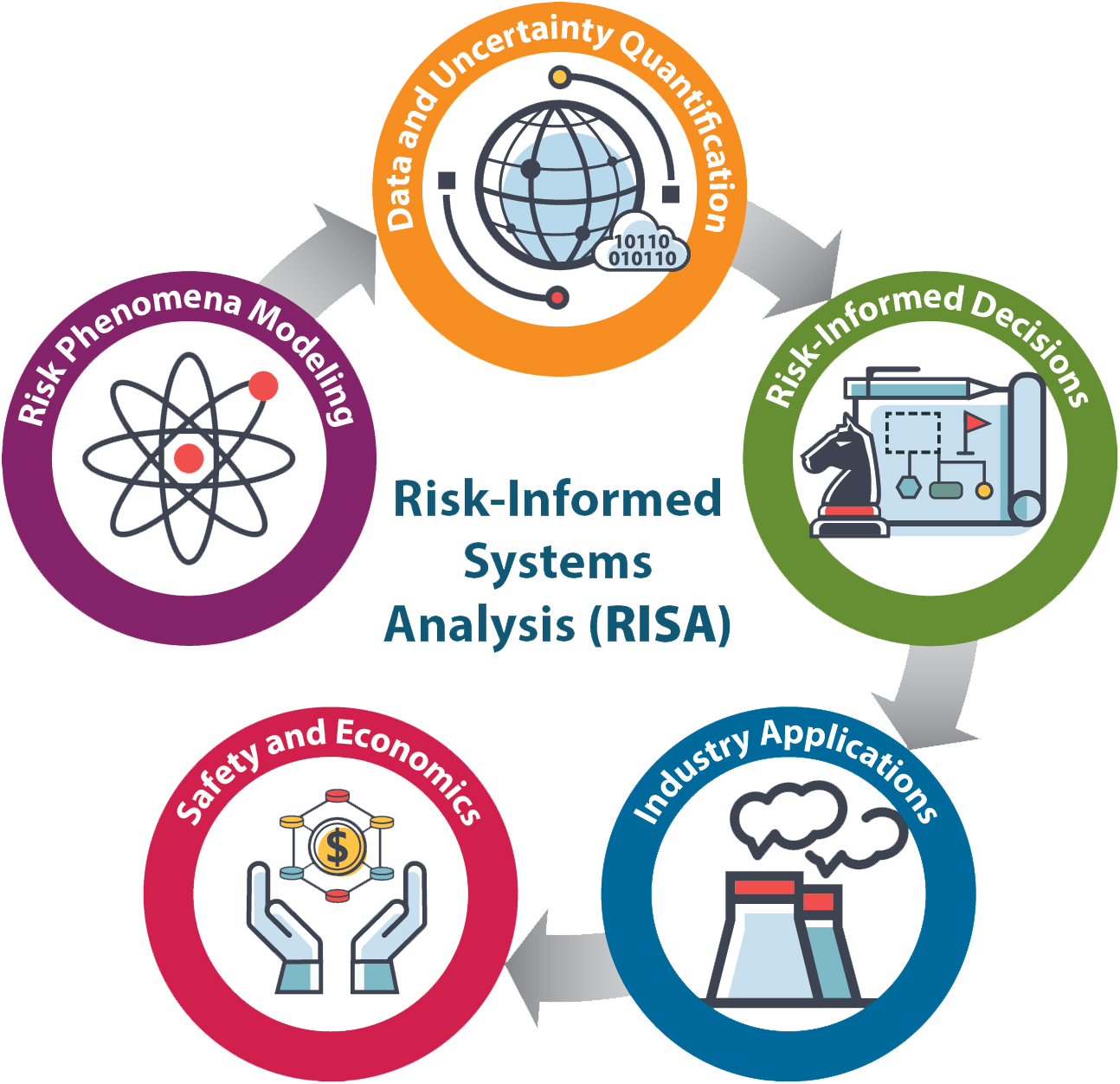RISK-INFORMED SYSTEMS ANALYSIS
BackgroundSafety is central to the design, licensing, operation, and economics of nuclear power plants. As the current LWR fleet continues operation up to and beyond 60 years, the need to ensure the integrity of vital SSCs remain paramount to prevent safety-significant events, to reduce or mitigate the effects of postulated accidents, and to prevent new failure modes. Historically, plant designers have over-designed aspects of nuclear power plant systems to provide robustness in the form of redundant and diverse engineered safety features to ensure that, even in the case of beyond-design basis scenarios, public health and safety will be protected with a high-degree of assurance. Developing a systematic approach to understand safety margins and economics, and by using that approach to develop margins management options, represent a vital capability for the nuclear power plant owner/operator. It enables plant owner-operators to recover costs spent managing unnecessary conservatism in operating practices and align safety management activities with safety outcomes. The Risk-Informed Systems Analysis (RISA) Pathway supports decision-making related to economics, reliability, and safety, providing integrated plant systems analysis solutions through collaborative demonstrations to enhance economic competitiveness of the operating fleet. Research and Development Purpose and GoalsThe purpose of the RISA Pathway research and development is to support plant owner-operator decisions with the aim to improve the economics, reliability, and maintain the high levels of safety of current nuclear power plants over periods of extended plant operations. The goals of the RISA Pathway are twofold:
-
To demonstrate risk-assessment methods coupled to safety margin quantification that can be used by decision-makers as a part of their margin recovery strategies;
-
To apply the "RISA toolkit" to enable more accurate representation of safety margins for the long-term benefit of nuclear assets.

Enhanced Resilient Nuclear Power Plant ConceptsThe objective of this research effort is to use the RISA methods and toolkit in industry applications, including methods development and early demonstration of technologies, in order to enhance existing reactors safety features (both active and passive) and to substantially reduce operating costs through risk-informed approaches to plant design modifications to the plant and their characterization. Cost and Risk Categorization ApplicationsThe objective of this research is to develop and test methods to decrease operational costs of nuclear power plants. Two plant cost-sensitive areas have been identified as initial targets: component reclassification-repurpose (see 10 CFR 50.69) and component testing-maintenance. Margin Recovery and Operation Cost ReductionThe objective of this research is to develop methods and demonstrate approaches to conduct a comprehensive investigation of design basis accident process requirements and implementation that can benefit from risk-informed, multi-physics, multi-scale, high-fidelity tools and methods to recover margins associated with uncertainties and conservatisms of legacy licensing, design, and analysis. Market EconomicsThe objective of the market economics activity is to use RISA tools to assess, characterize, and quantify predicted market revenue gaps for the existing fleet (by site, region, and grid integration), analyze electricity market attributes, and analyze stress case conditions.
|